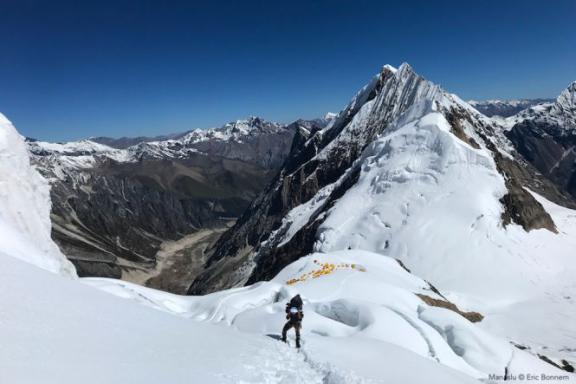Ever since man first set out to conquer the mountains in the middle of the 19th century, he has been relentless in his pursuit of ever-higher peaks and pushing back the limits of what is considered possible. Of the fourteen peaks over 8,000 meters in height on our planet, all are in the Himalayas, between Nepal, Pakistan and China. We invite you to retrace the history of the fourteen 8,000-meter climbs, the highest mountains in the world, which Expeditions Unlimited is the only French-speaking operator to offer in their entirety. This will also be an opportunity to take stock of our forthcoming departures for these expeditions.
See all our climbs above 8,000 meters.
1. Annapurna, 8,091 m - 3 June 1950 - France
For once, it's not usual. Much to the chagrin of the British Alpine Club, the first authorisation to climb an ‘8000+’ peak in Nepal was granted to the French Alpine Club for 1950. Dhaulagiri I (8,167 m) and Annapurna I (8,091 m) were offered to the Club on a platter. No map existed, and the French wandered for weeks in search of their mountains. For long weeks, all their efforts were concentrated on Dhaulagiri. Too difficult. When access to the north face of Annapurna was finally discovered, they had less than twenty days to succeed. But progress was rapid. On 2 June, Louis Lachenal and Maurice Herzog found themselves alone at camp 5, at 7,440m.
On 3 June 1950, at 2pm, our country could be proud. They had won, and without oxygen. A few minutes of glory, but at what price? Maurice Herzog may have survived the terrible tragedy of the descent quite well, gaining fame and honours in the process, but the same cannot be said of Louis Lachenal. To distinguish between patriotic heroism and human reality, and to sort out the true from the false, it is necessary to take the time to look seriously at the writings of each person in order to go beyond the myth.
Climb Annapurna at 8,091 meters in Nepal.
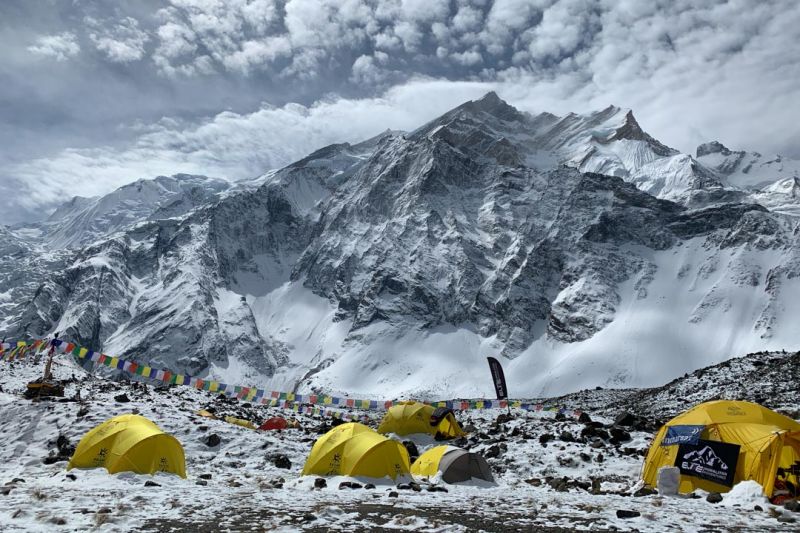
Annapurna © Expeditions Unlimited
2. Everest, 8,848 m - 29 May 1953 - New Zealand and Nepal
11th June 1938. The seventh attempt to climb Everest, via the North Face, failed again. Since 1921, the British mountaineers, masters of the terrain and with no rivals, had been throwing all their energies into this ultimate conquest. But courage, self-sacrifice and obstinacy were not enough. The Sherpas, without whom nothing could be achieved, first as simple porters and then as inseparable companions of altitude, played an active role. Two of them became legendary: Ang Tharkay and Tensing Norgay. With the North Face banned by the new Communist government in China, the members of the Crown turned to the South Face in Nepal, which finally opened its doors. On 29 May 1953, the very strong team led by Colonel John Hunt saw their efforts rewarded. New Zealander Sir Edmund Hillary and Sherpa Tensing Norgay finally set foot on the coveted summit. Thirty-two years after the very first attempt on the North Face.
Climb Everest via the Nepalese South Face.
Climb Everest by the North Tibet side.
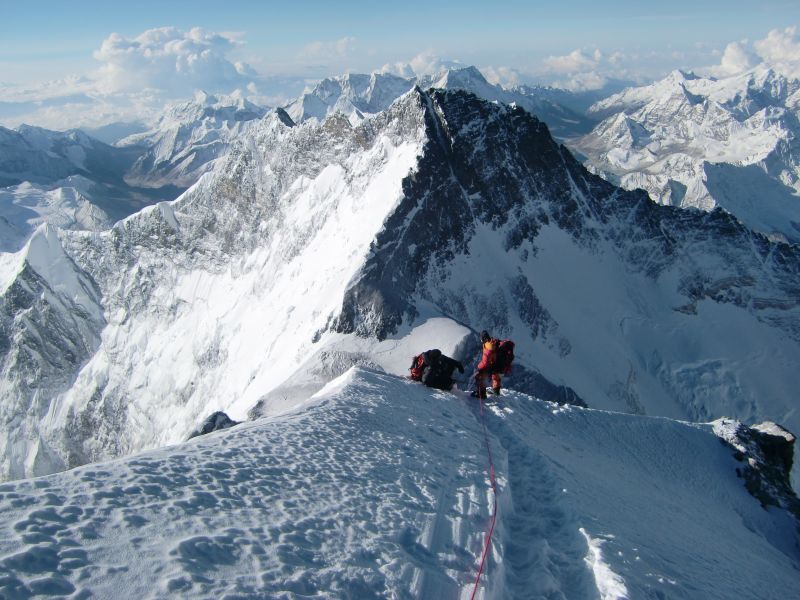
Climbing Everest from the south face of Nepal © Expeditions Unlimited
3. Nanga Parbat, 8,125 m - 3 July 1953 - Austria
Between Mummery's first tentative ascent in 1895 and Hermann Buhl's legendary success in 1953, 30 people lost their lives on the slopes of the ‘killer mountain’. A sad record. First the brilliant climber Mummery, then two Austro-German expeditions in 1934 and 1937 paid a heavy price. With its three huge, complex, avalanche-prone slopes, Nanga Parbat posed a real problem for the route planner. Unlike most of the 8000m summits, there was no obvious route to the summit. But tenacity paid off in the end. On 3 July 1953, during a legendary ascent, Hermann Buhl, alone and without oxygen, reached the summit via the north face, known as the Rakhiot side. On the way down, he had to bivouac a short distance from the summit, without any equipment whatsoever. An absolute feat that became the stuff of legend.
Climb Nanga Parbat at 8,126 meters in Pakistan.
4. K2, 8,611 m - 31 July 1954 - Italy
Of all the great firsts on one of the fourteen eight-thousanders, none has generated as much lasting controversy as the victory on K2. On 31 July 1954 two Italian climbers, Achille Compagnoni and Lino Lacedelli, reached the summit, supposedly without oxygen. But to make sure they were ahead of the brilliant young climber Walter Bonatti, who was climbing behind them, they hid their last camp. Bonatti brought the oxygen they needed to reach the summit. Night falls. With his porter Mahdi, they improvise a bivouac. No tent, no sleeping bag, no stove. They miraculously survived, but had to descend again. Compagnoni and Lacedelli retrieved the precious bottles left by Bonatti and raced to the summit. The two winners even claimed to have reached the summit without oxygen, the bottles having been partially used during the night by Bonatti and Mahdi, according to Compagnoni. Problem: Bonatti and Mahdi had no regulators. Compagnoni and Lacedelli were the only ones who did. Compagnoni added lies and slander to the infamy. There followed a controversy worthy of ancient tragedies. The CAI (Italian Alpine Club) only agreed to review the official version in 2004, after the death in 2001 of Professor Ardito Desio, leader of the expedition.
Climb K2 at 8,611 meters in Pakistan.
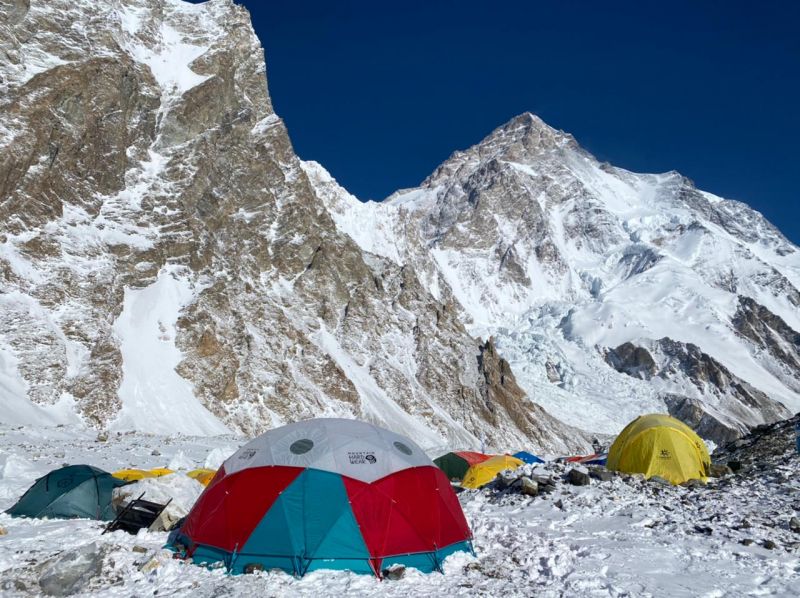
K2 © Expeditions Unlimited
5. Cho Oyu, 8,201 m - 19 October 1954 - Austria and Nepal
The wind. The terrible wind of Tibet. Breath of the gods, breath of destruction. It insinuates itself between all clothes, freezing the slightest patch of skin exposed to its bite. On this night in early October 1954, four men, who had already imagined themselves on the summit of the ‘Turquoise Goddess’, had a painful experience. Hoops broken, tents torn to shreds. The ease with which they overcame the major obstacle on the route, a serac bar that even the great Eric Shipton had to admit defeat to in 1952, led them to believe that success was easy. Victory on Cho Oyu would have to come on 19 October 1954, at the frozen fingertips of Herbert Tichy, accompanied by his friend Sherpa Pasang Dawa Lama and Sepp Jochler.
Climb Cho Oyu at 8,201 meters in Tibet.
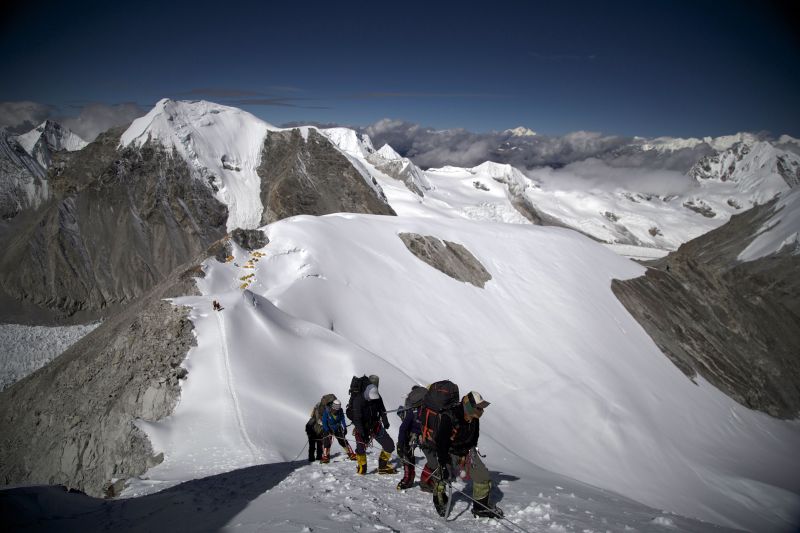
Cho Oyu © Expeditions Unlimited
6. Makalu - 15 May 1955 - 8,485 m - France
‘The ascent of Makalu, a happy page in the history of the Himalayas’. It was with this pithy phrase that Jean Franco, leader of the French expedition to Makalu in the spring of 1955, summed up their stunning victory on the fifth highest peak on the planet. The ‘more than 8,000’ summits previously climbed (Annapurna, Everest, Nanga Parbat, K2, Cho Oyu) saw no more than three participants reach the summit, thanks to the logistical support of everyone involved. At Makalu, spread over three successive days, all the climbers and the sirdar Gyaltsen Norbu, nine participants in all, set foot on the summit of one of the giants of the earth. Jean Couzy and Lionel Terray were the first to reach the summit on 15 May, and all the other members of the expedition were to follow. Their success was due as much to meticulous preparation and acclimatisation as to the successful reconnaissance in 1954. And to exceptional luck with the weather.
Climb Makalu at 8,485 meters in Nepal.
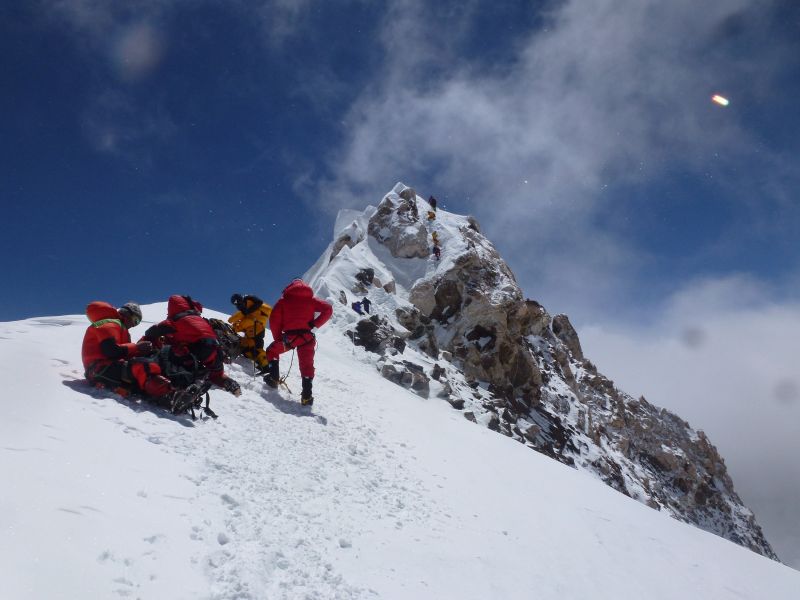
Makalu © Michel Baronian
7. Kangchenjunga - 25 May 1955 - 8,586 m - United Kingdom
It took fifty-six years of intense effort to reach the summit of Kangchenjunga. First there was the first ‘High Route’ climbed by Douglas Freshfield in 1899. Then, in 1905, Aleister Crowley, a sulphurous magician, determined the correct route for an ascent of the south-western slope. In 1929 and 1931, the Germans unsuccessfully fought an exhausting and sometimes tragic battle on the north-east spur and the long north ridge. Finally, on 12 May 1955, it was the route initiated by Crowley that provided the key to success for the British team of George Band and Joe Brown. It was England's first real victory.
Climb Kangchenjunga at 8,586 meters in Nepal.
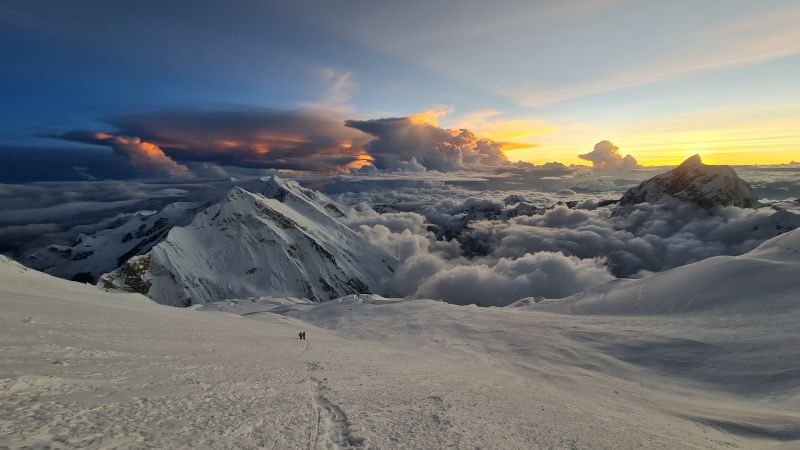
Kangchenjunga © Expeditions Unlimited
8. Manaslu, 8,163 m - 9 May 1956 - Japan
9 May 1956, 12.30pm: the Nepalese sirdar Gyalzen Norbu (37) added his second eight-thousand-metre ascent to his list of achievements. With Japanese himalayist Toshio Imanishi (41), he stood on the narrow rocky summit pyramid of Manaslu (8,156 m). For the first time, the summit of Manaslu has been climbed by man. It took the Japanese climber five attempts to reach the eighth highest peak in the world, which remains a landmark in the life of a mountaineer.
Climb Manaslu at 8,163 meters in Nepal.
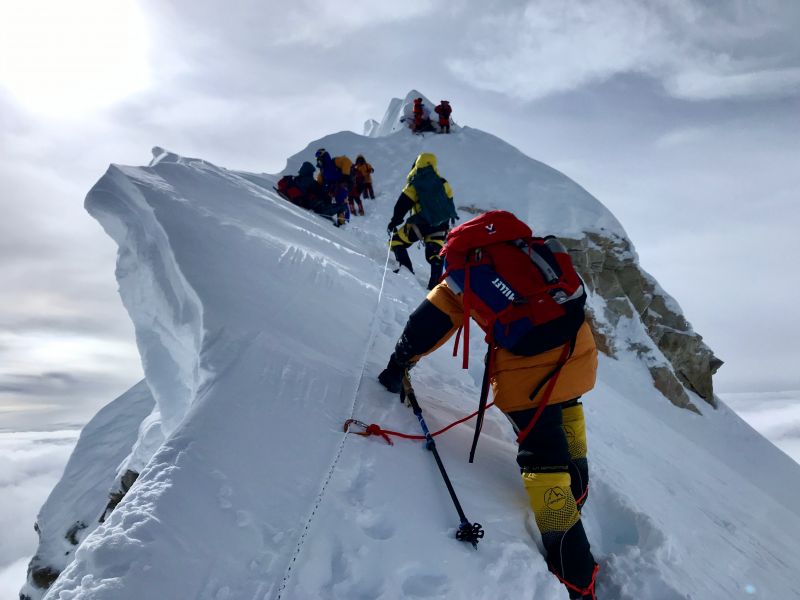
Manaslu © Eric Bonnem
9. Lhotse, 8,516 m - 18 May 1956 - Switzerland
Of all the eight-thousanders, Lhotse is the only one not to have been the subject of separate expeditions. Separated from Everest by the South Col (7,906 m), the Roof of the World has long eclipsed its haughty neighbour. In 1952, the Swiss came very close to reaching the summit of Everest. Stopped at 8,600 metres, the 150 metres to victory eluded them. They returned in 1956 with a twofold objective: to achieve Switzerland's first summit of the Roof of the World and to climb Lhotse, the fourth highest peak in the world. Retracing the route they had taken in 1952, they reached the South Col, where they installed a winch that enabled them to transport their equipment easily to Lhotse. A technological innovation: crampons with front spikes, used for the first time in the Himalayas, reduced the time and fatigue required for the tedious task of cutting the steps. On 18 May, Fritz Luchsinger and Ernst Reiss climbed a couloir on the west face (the ‘Reiss gully’) which gave them access to the summit. A few days later, Everest was also climbed. This was the first expedition to successfully climb two eight-thousanders within a few days of each other.
Climb Lhotse at 8,516 meters in Nepal.
10. Gasherbrum II, 8,034 m - 7 July 1958 Austria
Gasherbrum massif. Six lofty peaks, two of them over 8,000 meters: G II (8,035 m) and G I (8,068 m). In May 1954, the Austrians, who already had Nanga Parbat and Cho Oyu to their name, struck again. Eight of them climbed the Baltoro and set up base camp at the junction of the Abruzzo and South Gasherbrum glaciers. They ascended the latter and climbed the slopes of the south-west ridge of Gasherbrum II. On 30 June, an avalanche swept through Camp I (6,000 m), swallowing up much of their equipment. They persevered and set up camps II (6,700 m) and III (7,150 m) along the ridge. The final bivouac was at 7,500 metres, without oxygen. On 7 July 1956, Fritz Moravec, Josef Larch and Hans Willenpart crossed below the summit pyramid, climbed the east ridge and gained a foothold on the narrow summit of Gasherbrum II. A fine victory on a summit that presents no major difficulties.
Ascent of Gasherbrum II to 8,034 meters.
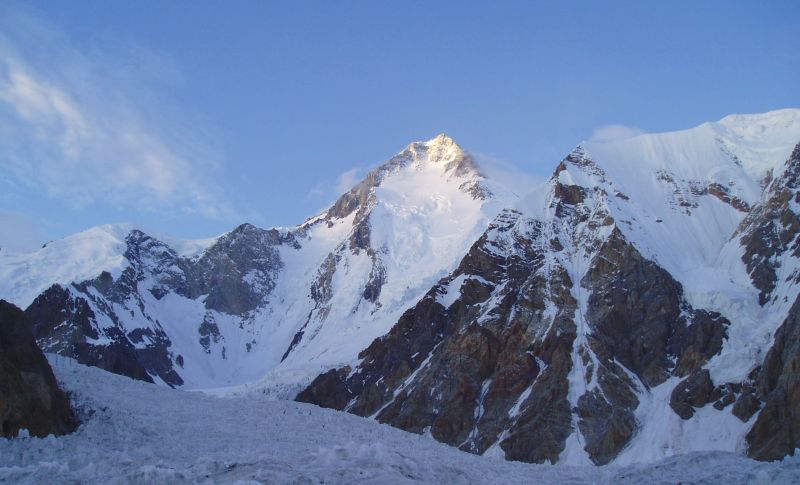
Gasherbrum II © Jérôme Brisebourg
11. Broad Peak, 8,047 m - 9 June 1957 - Austria
By the end of 1956, ten of the fourteen 8,000+ climbs had been climbed by Himalayan climbers. Three had succumbed to the brilliance of Austrian climbers. In 1957, four summits remained to be climbed, including two in Pakistan: Gasherbrum I, or Hidden Peak (8,068 m) and Broad Peak (8,047 m). Forerunners of the alpine-style expeditions to come, it was once again the Austrians who came to the fore. Hermann Buhl, Kurt Diemberger, Marcus Schmuck and Fritz Wintersteller achieved a feat on Broad Peak that went almost unnoticed at the time. With no base camp, no altitude Sherpas and no oxygen, it was a daring feat. But the success still had its dark side, with the sudden death of Hermann Buhl in an ill-fated attempt on Chogolisa (7,665 m).
Climb Broad Peak at 8,047 meters in Pakistan.
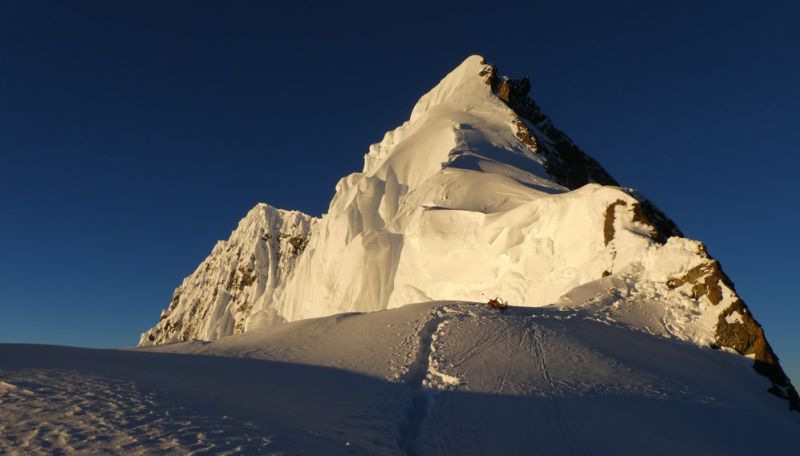
Broad Peak © Tunc Findik
12. Gasherburm I or Hidden Peak, 8,080 m - 3 July 1958 - USA
First identified by India's topographical service as K5, then approached by Sir Martin Conway in 1892, Gasherbrum I (8,068 m), ‘the sparkling mountain’ in Balti, became, for Sir Martin Conway, Hidden Peak, ‘the hidden mountain’. In 1934, Günter Dyhrenfurth's international expedition made a name for itself by producing the first fictional feature film shot in this grandiose setting. Then came the heavy expedition led by the Frenchman Henri de Ségogne (660 porters, 11 tonnes of equipment) in 1936. But it wasn't until 1958 that Americans Andy Kauffman and Pete Schoening were the first to climb this magnificent Baltoro peak.
Climb Gasherbrum I at 8,080 meters in Pakistan, usually offered in combination with Gasherbrum II.
13. Dhaulagiri, 8,167 m - 13 May 1960 - Switzerland
May 1960. Ten years, almost to the day, after the first reconnaissance at the foot of the ‘White Mountain’, Dhaulagiri (8,167 m) was about to be climbed. The seventh highest peak on the planet, it is the last to resist its many contenders. Or to be more precise, the last summit accessible to the Western world. First the Austrian mountaineers, then the Swiss, were to solve the last great problem of the era in the Himalayas. But this time, the victory belonged as much to the pioneers of mountain aviation as to the mountaineers themselves. The pilot Ernst Saxer and the engineer Emil Wick aboard the ‘Yeti’, the first Pilatus P-6 to land on the Himalayan glaciers, played as much a part in the victory as the first climbers to set foot on the summit: Kurt Diemberger, Albin Schelbert, Nawang Dorje, Ernst Forrer, Nima Dorje, and finally Peter Diener.
Ascension du Dhaulagiri à 8,167 m au Népal.
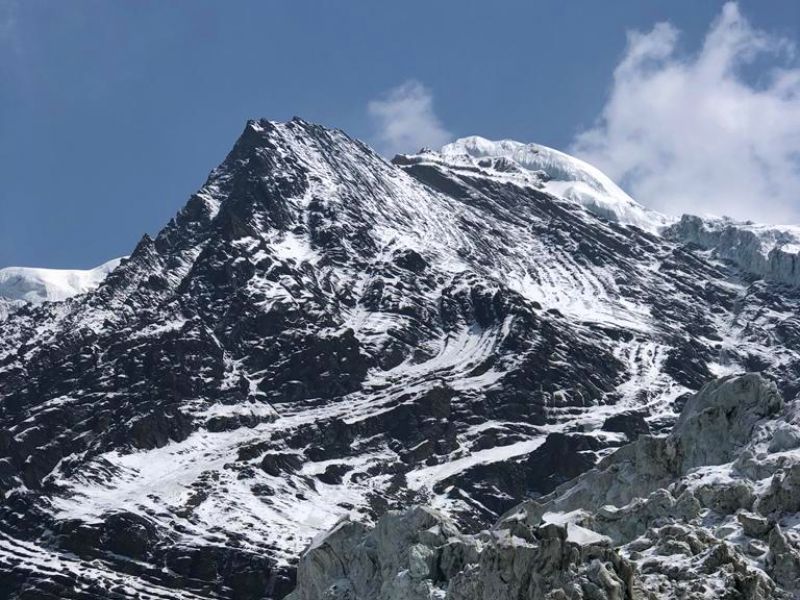
Dhaulagiri © Sandra Leal
14. Shishapangma, 8,027 m - 2 May 1964 - China
The race for the fourteen ‘8,000’ climbs officially came to an end. Fourteen short years separate the victory of Maurice Herzog and Louis Lachenal on Annapurna I (3 June 1950) and that of the Chinese team led by Xǔ Jìng on 2 May 1964. But one ambiguity remains. The short account of the ascent published in the Alpine Journal, the prestigious magazine of the British Alpine Club, gives the altitude of the summit as 8,013 metres of altitude. In fact, this was the western antecima, sometimes erroneously called the central summit, separated from the main summit (8,027 m) by a long snowy ridge. Doug Scott, the famous British Himalayan climber, was the first to express doubts during the 1982 expedition. After all, perhaps the British were the real winners! Could they have had the last word in this fabulous saga?
Climb Shishapangma at 8,027 meters in Tibet.
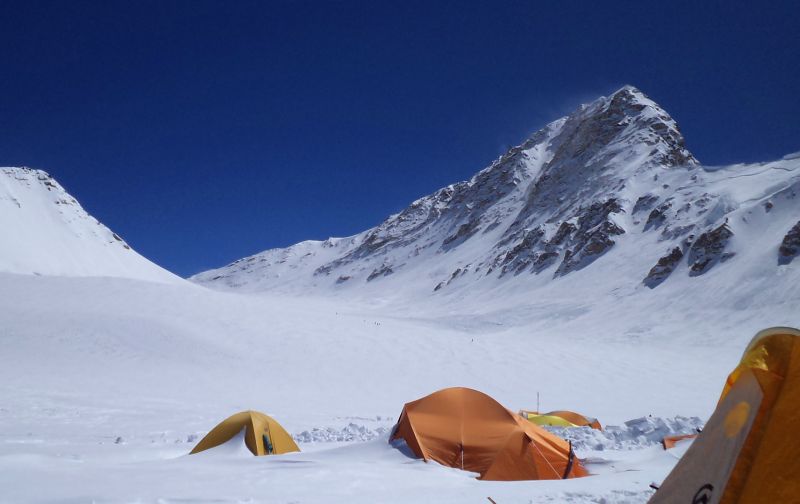
Shishapangma © Expeditions Unlimited
Text by Didier Mille
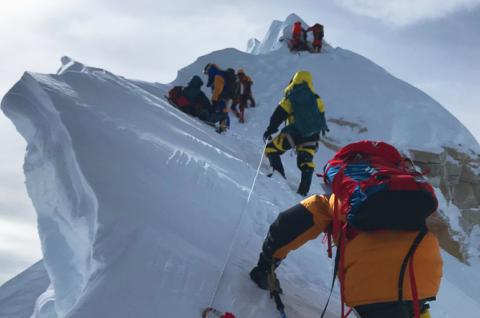
Climb Manaslu at 8163 meters in Nepal
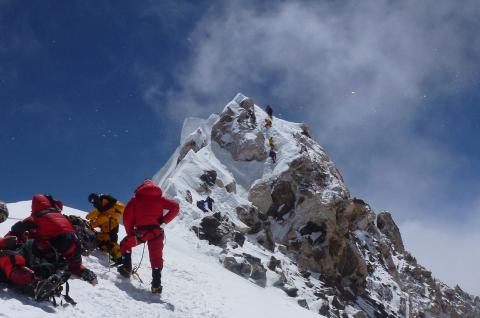
Climb Makalu at 8485 meters in Nepal
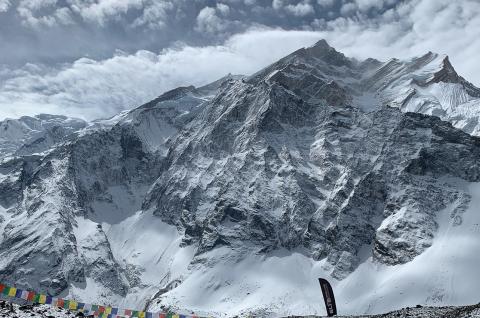

 Expeditions Unlimited blog
Expeditions Unlimited blog